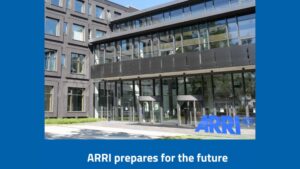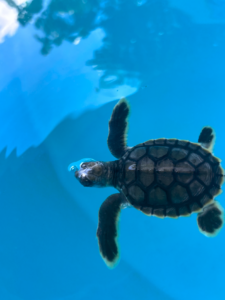
Researchers at Florida Atlantic University’s Harbor Branch Oceanographic Institute have unveiled a comprehensive review that chronicles four decades of changes in pelagic sargassum—a free-floating brown seaweed integral to the Atlantic Ocean ecosystem. Once largely confined to the nutrient-poor waters of the Sargasso Sea, sargassum is now recognized as a rapidly expanding marine organism, influenced by both natural processes and human-induced nutrient enrichment.
The review, published in the journal Harmful Algae, illuminates the origins and development of the Great Atlantic Sargassum Belt (GASB), a vast, recurring bloom stretching from West Africa to the Gulf of America. Since its first appearance in 2011, the belt has formed nearly annually, with a record biomass of 37.5 million tons recorded in May, excluding the baseline biomass of 7.3 million tons historically found in the Sargasso Sea.
Understanding the Sargassum Phenomenon
By integrating historical oceanographic data, modern satellite imagery, and advanced biogeochemical analyses, the review offers a detailed framework for understanding the dramatic shifts in sargassum distribution, productivity, and nutrient dynamics. It underscores the broader implications of anthropogenic nutrient enrichment on ocean ecology and the necessity for coordinated international efforts to monitor and manage these massive seaweed blooms.
“Our review takes a deep dive into the changing story of sargassum—how it’s growing, what’s fueling that growth, and why we’re seeing such a dramatic increase in biomass across the North Atlantic,” said Brian Lapointe, Ph.D., lead author and research professor at FAU Harbor Branch. By examining shifts in nutrient composition—particularly nitrogen, phosphorus, and carbon—researchers are beginning to understand the larger environmental forces at play.
The Historical Context
Initially, oceanographers charted the Sargasso Sea based on surface sightings of sargassum, believing it thrived in warm, clear, but nutrient-poor waters. This notion created a paradox when mid-20th-century oceanographers described the region as a “biological desert.” Recent satellite observations and ocean circulation models have resolved this paradox by tracing the seasonal transport of sargassum from nutrient-rich coastal areas, especially the western Gulf of America, to the open ocean via the Loop Current and Gulf Stream.
Remote sensing technology was crucial in these discoveries. In 2004 and 2005, satellites captured extensive sargassum windrows in the western Gulf of America, a region experiencing increased nutrient loads from river systems such as the Mississippi and Atchafalaya.
Impact of Nutrient Enrichment
“These nutrient-rich waters fueled high biomass events along the Gulf Coast, resulting in mass strandings, costly beach cleanups, and even the emergency shutdown of a Florida nuclear power plant in 1991,” Lapointe noted. A major focus of the review is the elemental composition of sargassum tissue and its evolution over time.
Laboratory experiments and field research since the 1980s have confirmed that sargassum grows more rapidly in nutrient-enriched waters than in the nutrient-poor open ocean. Controlled studies revealed that the primary species, sargassum natans and sargassum fluitans, can double their biomass in just 11 days under optimal conditions. Phosphorus is often the primary limiting nutrient for growth, although nitrogen also plays a critical role.
From the 1980s to the 2020s, the nitrogen content of sargassum increased by more than 50%, while phosphorus content decreased slightly, leading to a sharp rise in the nitrogen-to-phosphorus (N:P) ratio.
“These changes reflect a shift away from natural oceanic nutrient sources like upwelling and vertical mixing, and toward land-based inputs such as agricultural runoff, wastewater discharge, and atmospheric deposition,” Lapointe explained. “Carbon levels in sargassum also rose, contributing to changes in overall stoichiometry and further highlighting the impact of external nutrient loading on marine primary producers.”
Implications for Coastal Communities
The review also explores how nutrient recycling within sargassum windrows, including excretion by marine organisms and microbial breakdown of organic matter, sustains growth in nutrient-poor environments. This micro-scale recycling is vital for maintaining sargassum populations in parts of the ocean that would otherwise not support high productivity levels.
Data from sargassum collected near the Amazon River mouth support the hypothesis that nutrient outflows from this major river significantly contribute to the GASB’s development. Variations in sargassum biomass have been linked to flood and drought cycles in the Amazon basin, further connecting land-based nutrient inputs to the open ocean.
The Path Forward
The formation of the GASB appears to have been seeded by an extreme atmospheric event—the negative phase of the North Atlantic Oscillation in 2009 to 2010—which may have shifted surface waters and sargassum from the Sargasso Sea southward into the tropical Atlantic. However, researchers caution that there is no direct evidence of this movement. Genetic and morphological data suggest that some sargassum populations, particularly the dominant S. natans var. wingei, were already present in the tropical Atlantic before 2011, indicating that this region may have played an overlooked role in the early development of the GASB.
“The expansion of sargassum isn’t just an ecological curiosity—it has real impacts on coastal communities. The massive blooms can clog beaches, affect fisheries and tourism, and pose health risks,” Lapointe emphasized. “Understanding why sargassum is growing so much is crucial for managing these impacts. Our review helps to connect the dots between land-based nutrient pollution, ocean circulation, and the unprecedented expansion of sargassum across an entire ocean basin.”
This research was funded by various organizations, including the Florida Department of Emergency Management, United States Environmental Protection Agency, and NOAA Monitoring and Event Response for Harmful Algal Blooms program. Historical studies were supported by NASA’s Ocean Biology and Biogeochemistry Program, NOAA RESTORE Science Program, and other foundations.







